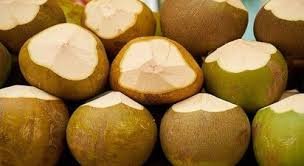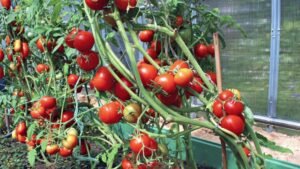Monday, 27 October 2025
Vietnam’s coconut industry booms but can it sustain momentum?
While the spike is benefiting farmers, it has also triggered concerns over sustainability, raw material security, and long-term market stability issues Vietnam’s coconut industry is experiencing a remarkable surge, propelled…

While the spike is benefiting farmers, it has also triggered concerns over sustainability, raw material security, and long-term market stability issues
Vietnam’s coconut industry is experiencing a remarkable surge, propelled by rising global demand and expanding export markets. Since 2022, coconut prices have soared sixfold, reaching VND190,000 ($7.26) per dozen, marking one of the steepest price hikes in Vietnam’s agricultural sector, according to the Vietnam Coconut Association.
While the spike is benefiting farmers, it has also triggered concerns over sustainability, raw material security, and long-term market stability issues, now dominating conversations among producers, exporters, and policymakers.
Although high prices are a boon for coconut growers, deep processing enterprises, which form the backbone of Vietnam’s value-added coconut industry, are grappling with shrinking profit margins. With limited room to raise prices in highly competitive global markets, many processors find themselves squeezed by the escalating cost of raw materials.
This has led some manufacturers to consider relocating operations to neighbouring Southeast Asian countries with more stable supply chains and lower production costs.
To rebalance the ecosystem, the Vietnam Coconut Association has proposed several strategic interventions:
Export tax on raw coconuts to curb unchecked exports and protect domestic processing.
Support for modern farming practices, pest control programs, and sustainable cultivation methods to enhance productivity.
In June 2025, raw coconut prices saw a temporary 30 per cent drop, driven by increased imports from Indonesia, improved growing conditions during the rainy season, and uncertainty caused by proposed export regulations.
Global Demand Fuels Growth Momentum
From food and drinks to cosmetics and biofuels, coconut-based products are gaining traction across global markets. Vietnamese coconuts, prized for their quality, are increasingly being shipped to China, the U.S., India, and the Middle East.
This momentum follows years of strategic promotion by the Vietnam Coconut Association, which has participated in global trade fairs and marketing campaigns since 2018.
Key milestones include:
U.S. approval of Vietnamese fresh coconut imports in 2023.
China’s green light in August 2024 triggered a wave of bilateral trade and widespread media coverage.
These breakthroughs have opened doors to new markets, including Europe and the Middle East, elevating Vietnamese coconuts into the global spotlight.
Coconut prices have risen sharply across Vietnam, with Central Vietnam consistently commanding higher rates due to more favourable conditions:
| Region | 2022 ($/fruit) | 2023 ($/fruit) | 2024 ($/fruit) | 2025 ($/fruit) |
| Central Vietnam | Raw: 0.24 Fresh: 0.16 | Raw: 0.36 Fresh: 0.40 | Raw: 0.72 Fresh: 0.68 | Raw: 0.76 Fresh: 0.72 |
| South Vietnam | Raw: 0.12 Fresh: 0.12 | Raw: 0.20 Fresh: 0.16 | Raw: 0.48 Fresh: 0.52 | Raw: 0.76 Fresh: 0.64 |
Central Vietnam typically sees prices around 10 per cent higher, due to reduced exposure to saline intrusion and more stable growing conditions, compared to the vulnerable Mekong Delta in the South.
Despite booming demand, the coconut supply in Vietnam faces significant environmental and agricultural constraints:
Prolonged droughts and heatwaves have extended harvest times from 10–11 months to up to 13 months.
Saline intrusion in the Mekong Delta is degrading both yield and quality.
Low adoption of modern techniques is hampering productivity only about 20 per cent of farmers actively fertilise and control pests, leaving crops vulnerable to infestations by Brontispa longissima, coconut worms, and caterpillars.
Skyrocketing demand has led to informal cross-border exports into Cambodia, especially through Tay Ninh, Long An, Dong Thap, and An Giang provinces. Large quantities of dried and peeled coconuts are bypassing official trade channels via rudimentary transport methods.
Simultaneously, Chinese enterprises are investing in Vietnam’s coconut value chain, particularly in Ben Tre province, leveraging its geographical indication status. These companies purchase coconuts for pre-processing, such as frozen coconut water and milk and then export the semi-finished products to China for final processing.
While this expansion has opened up market opportunities, it has also made it more difficult for Vietnamese processors to compete for raw materials, raising concerns about long-term supply chain resilience.
Coconut in Vietnamese Cuisine and Culture
Beyond economic value, coconuts are deeply woven into Vietnam’s culinary and cultural identity:
Coconut water is used for braising, soups, poaching, and traditional beverages like chè.
Coconut milk enriches curries, desserts, and smoothies.
Grated coconut and cream appear in sweet dishes and jams.
In some regions, young coconuts and coconut worms are also culinary specialities.
From coconut rice in Hue to coconut jelly and jam in the Mekong Delta, the fruit remains a daily staple across Vietnamese kitchens.
Vietnam’s coconut sector stands at a crossroads poised for global leadership but also faces escalating risks in resource management, processing capacity, and farmer education.
By enacting forward-thinking policies, enhancing agricultural practices, and fostering strong collaboration among farmers, processors, investors, and regulators, Vietnam has the potential to sustain its growth trajectory while ensuring lasting benefits for both local communities and international markets.
Shraddha Warde
shraddha.warde@mmactive.com
Technology
Nestlé’s next-gen SAP Core unlocks new agility, AI insights and operational excellence
Oct 27, 2025 | Company News
Australia releases toolkit to advance gender equity across wine sector
Oct 27, 2025 | Australia
From Ocean Waste to Sustainable Nutrition: Inside EU’s MARMADE Project
Oct 27, 2025 | Europe
Food Testing
Thermo Fisher Scientific launches Orbitrap mass detector for food safety testing
Oct 24, 2025 | Company News
ADM advances quality capabilities with opening of new Central Milling Laboratory
Oct 16, 2025 | Company News
South Australia now tomato virus free
Oct 13, 2025 | Australia
More Popular
Nestlé’s next-gen SAP Core unlocks new agility, AI insights and operational excellence
Oct 27, 2025 | Company News
European Commission approves merger between FrieslandCampina and Milcobel
Oct 27, 2025 | Company News






